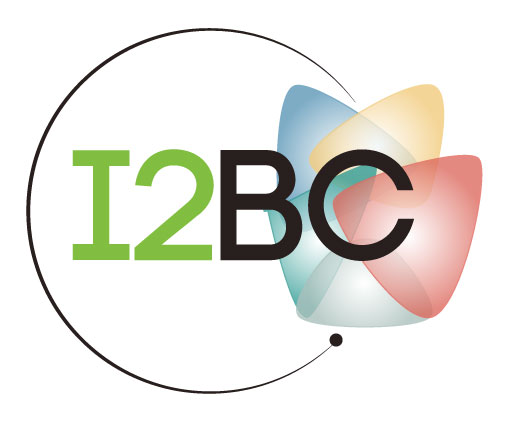Building bridges to move recombination complexes
Résumé
A central feature of meiosis is pairing of homologous chromosomes , which occurs in two stages: coalignment of axes followed by installation of the synaptonemal complex (SC). Concomitantly, recombination complexes reposition from on-axis association to the SC central region. We show here that, in the fungus $Sordaria\ macrospora$, this critical transition is mediated by robust interaxis bridges that contain an axis component (Spo76/Pds5), DNA, plus colocalizing Mer3/Msh4 recombination proteins and the Zip2-Zip4 mediator complex. Mer3-Msh4-Zip2-Zip4 colocalizing foci are first released from their tight axis association, dependent on the SC transverse-filament protein Sme4/Zip1, before moving to bridges and thus to a between-axis position. Ensuing shortening of bridges and accompanying juxtaposition of axes to 100 nm enables installation of SC central elements at sites of between-axis Mer3-Msh4-Zip2-Zip4 complexes. We show also that the Zip2-Zip4 complex has an intrinsic affinity for chromosome axes at early leptotene, where it localizes independently of recombination, but is dependent on Mer3. Then, later, Zip2-Zip4 has an intrinsic affinity for the SC central element, where it ultimately localizes to sites of crossover complexes at the end of pachytene. These and other findings suggest that the fundamental role of Zip2-Zip4 is to mediate the recombina-tion/structure interface at all post-double-strand break stages. We propose that Zip2-Zip4 directly mediates a molecular handoff of Mer3-Msh4 complexes, from association with axis components to association with SC central components, at the bridge stage, and then directly mediates central region installation during SC nucleation. meiotic recombination | synaptonemal complex | Zip2-Zip4 | chromosome structure | interaxis bridges T he central feature of meiotic prophase, which distinguishes it from the mitotic cell cycle, is a complex program of interactions between homologous maternal and paternal chromosomes ("homologs"). A major event of this program is the coming-together of homologous axes, first via coalignment and then via synapsis mediated by the tripartite protein structure called synaptonemal complex (SC). In most organisms, coalignment and SC formation are directly mediated by recombination. Recombination initiates through DNA double-strand breaks (DSBs) that occur within axis-associated recombination complexes (reviewed in ref. 1). For coalignment, a consensus hypothesis is that one DSB end searches for a DNA partner on the homologous chromosome. A resultant nascent D-loop between the DSB end and its homologous DNA region nucleates development of a partner recombination complex, which then becomes associated with the underlying partner axis, where it mediates spatial juxtaposition of the linked two chromosome axes (reviewed in ref. 2). Occurrence of such events at many positions along the chromosomes results in coalignment of axes all along their lengths. Following coalignment, formation of the SC at some of the coalignment-mediated recombination sites brings homologous axes together by installation of SC central elements (reviewed in refs. 3-5). The transition from coalignment to synapsis is a major event of meiotic prophase. One of the most interesting features of this transition is the fact that recombination complexes must undergo a major change in localization: from the on-axis position that occurs before and during coalignment (above) to a between-axis position on the central region of the SC. Once the SC has formed, recombination complexes are associated with the SC central element, and crossover (CO)-fated recombination complexes retain this association throughout ensuing recombination events, with mature COs finally emerging shortly before the SC is disassembled (reviewed in refs. 2 and 6). Existing information provides some clues about the nature of this transition. i) First, EM images in Allium cepa have defined the existence of bridges between coaligned axes, including bridges with centrally localized nodules (7). Although the involved proteins remain unknown, these bridges/nodules likely represent the sites of recombinational interactions. Accordingly, in human and mouse spermatocytes, RPA (Replication Protein A) and BLM (Bloom Syndrome Protein) proteins are visible either as matching foci still attached to their coaligned axis or as coalescent foci now forming a bridge linking the two axes before onset of SC formation (8-10). ii) Second, studies in budding yeast have identified a set of molecules that coordinately mediate both SC nucleation and progression of CO-designated recombination interactions (11-13). This group, referred to as "ZMM" proteins, includes SC transverse-filament protein Zip1, the SUMO Significance The central feature of meiosis is pairing and recombination of homologous maternal and paternal chromosomes (homologs). Homolog axes become first coaligned at a certain distance; they then synapse by synaptonemal complex (SC) formation. We show that the structural and molecular pathway by which chromosomes transit from coalignment to the SC state in the fungus Sordaria macrospora involves the formation of robust interaxis bridges comprising axis component Spo76/Pds5, re-combination proteins, and the evolutionary-conserved Zip2-Zip4 complex. Zip2-Zip4 mediates the recombination complex/ structure interface from coalignment onward. These findings solve the conundrum of how recombination complexes move from on-axis localization at coalignment to between-axis lo-calization on SC central regions and provoke new ideas about the molecular and mechanistic nature of SC nucleation.
Origine : Fichiers éditeurs autorisés sur une archive ouverte
Loading...

